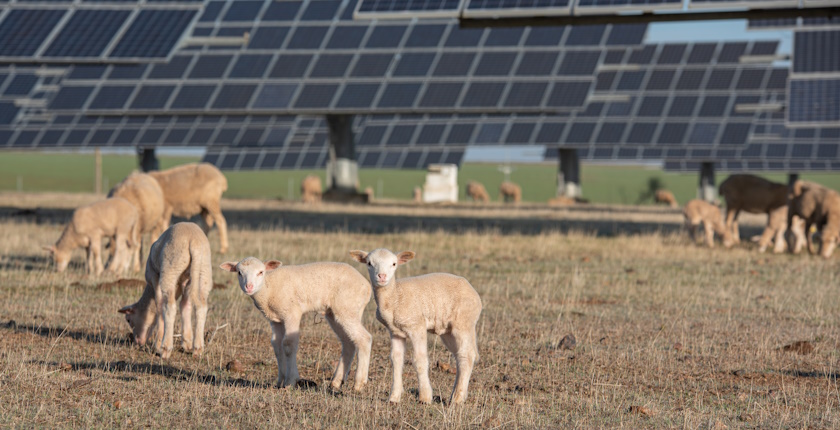
Photo: iStock
Romania plans to limit the surface under solar panels and accompanying equipment on pastureland to 20%. The draft decree on methodology for the agrisolar concept is under public discussion.
Agricultural land has been shrinking in most of the world for hundreds of years as authorities prioritized just about any other economic activity in such locations.With the rising risk of a global food crisis, the European Union has been recommending and imposing restrictions. The buck stopped with some of the cleanest energy technologies: solar and wind power.
Environmentalists are warning that such facilities mustn’t be allowed on fertile land. An emerging solution is agrisolar, also known as agrivoltaics. In essence, solar arrays are designed and arranged to allow agricultural activities on the same location. The devices are mounted high enough on support structures to allow cattle grazing or fruit or vegetable production beneath.
At the same time, they provide shading and protect from hail and strong rain.
Acknowledging the issue, the Romanian Ministry of Agriculture and Rural Development drew up a methodology for agrisolar installations on pastureland. Such sites are near the bottom of the agricultural gradation board.
Energy production mustn’t jeopardize agricultural activities
The draft decree modifies and completes the methodological norms of the so-called dual system. The public consultation period expires on August 17.
Eligible are fields registered as permanent pastures. The legislation complements earlier laws that introduced the possibility of using such land.
The goal is to balance agricultural activities and energy production, so that the latter doesn’t jeopardize grazing, fodder production and other work.
If two owners are to utilize a single agrivoltaic lot, they would need separate contracts for energy and agriculture. The establishment of an agrivoltaics plant will depend on the consent of animal breeders or other farmers that work the land under lease, the government proposed.
Authorities to check compliance with law once per year
A maximum of 20% of units of 50 hectares each can be used for electricity production, the document reads. The said portion would need to be formally repurposed.
Country agricultural directorates are set to be tasked with annual monitoring of the compliance of the agricultural activity with the law.
Romania earlier experienced a surge in purchases of agricultural land. Then, in recent years, many investors decided to use it for renewable energy projects. Debates are also underway on protecting agricultural land in several other countries in the region that Balkan Green Energy News covers. There is still a long way to go before even the rooftop potential alone is used up.
In Albania, investors can combine agricultural production with solar power facilities on land in categories 7 and 8. Other solar power plants are allowed only on the lowest-graded fields – 9 and 10,
Some developers advertise projects as agrisolar if they plan just any agricultural activity at the site. For instance, companies in the Balkans have been trying to win over local sentiment by allowing cattle grazing between arrays. However, grass must be cut anyway, which means almost any photovoltaic facility would be an agrisolar plant.
Notably, Italy recently banned the installation of ground-mounted solar power plants on fertile fields, allowing only agrisolar plants.


















Be the first one to comment on this article.